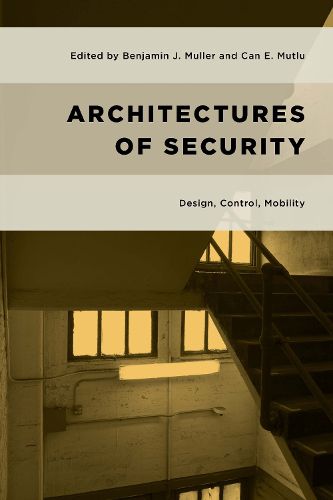Readings Newsletter
Become a Readings Member to make your shopping experience even easier.
Sign in or sign up for free!
You’re not far away from qualifying for FREE standard shipping within Australia
You’ve qualified for FREE standard shipping within Australia
The cart is loading…






This book examines the relationship between architecture, security, and technology, focusing on the way these factors mutually constitute a so-called "ferocious" architecture. This is an architecture, aesthetic and/or design that is violent, forcing the performances and practices of sovereign power and neoliberalism.
Focusing on this tripartite relationship between architecture, security, and technology, the text provides examples from urban spaces in both the global north and south, which: discipline the mobility and movement of populations, as well as reinforce socioeconomic cleavages. They examine borders and borderlands, airports and ports of entry, and the borderscape of the Sonoran Desert, which exemplify often inhumane examples of ferocious sovereign power. Other cases look at concealed ferocity in the form of databases, social sorting, and surveillance regimes. It looks at the politics of sound in the airport as a disciplining mechanism and the fluid space of teargas as an allegedly "non-lethal" but nonetheless ferocious tool of crowd control and disciplinary power. It touches on the management and design of spaces for to facilitate and control those suffering from dementia; the politics of the bulldozer, as ferocious destroyer of design; and the curated ferocious politics of memory, and the manner in which the museum can exhibit a crisis of memory, attempting to conceal both contemporary and historic ferocity.
$9.00 standard shipping within Australia
FREE standard shipping within Australia for orders over $100.00
Express & International shipping calculated at checkout
This book examines the relationship between architecture, security, and technology, focusing on the way these factors mutually constitute a so-called "ferocious" architecture. This is an architecture, aesthetic and/or design that is violent, forcing the performances and practices of sovereign power and neoliberalism.
Focusing on this tripartite relationship between architecture, security, and technology, the text provides examples from urban spaces in both the global north and south, which: discipline the mobility and movement of populations, as well as reinforce socioeconomic cleavages. They examine borders and borderlands, airports and ports of entry, and the borderscape of the Sonoran Desert, which exemplify often inhumane examples of ferocious sovereign power. Other cases look at concealed ferocity in the form of databases, social sorting, and surveillance regimes. It looks at the politics of sound in the airport as a disciplining mechanism and the fluid space of teargas as an allegedly "non-lethal" but nonetheless ferocious tool of crowd control and disciplinary power. It touches on the management and design of spaces for to facilitate and control those suffering from dementia; the politics of the bulldozer, as ferocious destroyer of design; and the curated ferocious politics of memory, and the manner in which the museum can exhibit a crisis of memory, attempting to conceal both contemporary and historic ferocity.